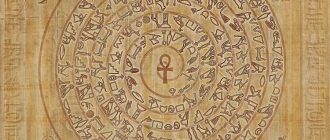Interested in Egyptian Flax Plant? Read on to find out the health benefits of the Egyptian flax plant…
The flax seed or linseed plant is scientifically called the Linum usitatissimum. It is part of the genus Linum and falls in the Linaceae family. The flax seed plant is cultivated all across India and the eastern Mediterranean region. This was one of the first crops that was domesticated and grown in the region and propagated in ancient Egypt.
In ancient Egypt herbs were considered God’s gift to mankind. This was mainly due to the curative properties of the herbs. The Egyptian medicine relied heavily on the use of many herbs to treat the sick. When looking for natural alternatives to cure different ailments, the Egyptians referred to herbs and spices to create poultices and balms or even concoctions which could be drunk for good health.
The Egyptian flax plant is an ideal digestive aid and combined with the good diet and healthy lifestyle habits it helps the body detox completely and keeps your digestive tract very healthy.
The impact of this little seed on the overall well-being of the human body is amazing. Ancient Egyptians believed that the human body is able to cure extensive number of diseases on its own and since each part is interlinked, when you take a holistic and natural approach to curing the sick then the results are better. The fundamental principle is applied to all sorts of Egyptian medicine remedies with great results.
Description of the Egyptian Flax Plant
The Egyptian flax plant grows up to 1.2 m in height and has very slender and long stems. This plant sprouts annually and has long and thin green colored leaves which are approximately 3 mm wide and from 20 up to 40 mm in length. The Egyptian flax plants have light blue flowers which have a total of five petals giving it a total diameter which ranges from 15 up to 25 mm. The fruit of the flax plant is from 5 to 9 mm in diameter and is round in shape with its center containing shiny brown seeds which are approximately 4 to 7 mm in length.
Even though the name flax is utilized for the plant, it is also used to denote the fibers of the un-spun Egyptian flax plant. This plant is basically cultivated so that its seed and fiber can be harvested.
Global Uses of Egyptian Flax Plant
Flax fibers have been utilized for the production of linen for more than 5000 years all over the world. It was initiated in Egypt and great many frescoes have been created on the Egyptian tombs which reflect flax plants. The use of the Egyptian flax plant in Neolithic times can be found in Northern Europe.
It was propagated and introduced finally in Northern America when it was introduced by the Puritans upon migration to the continent. The Egyptian flax plant is harvested and the fiber is then extracted from the skin of the flax plant stem. The fibers are popular because they are lustrous and very flexible making them more durable than cotton fiber but having lesser elasticity.
The high-grade fiber is utilized for making lace, bedding and damasks while the lower grade fiber is utilized for producing ropes and twine. The flax plant is also utilized as a raw material for the creation of high quality paper, banknotes as well as the paper utilized for rolling cigarettes.





